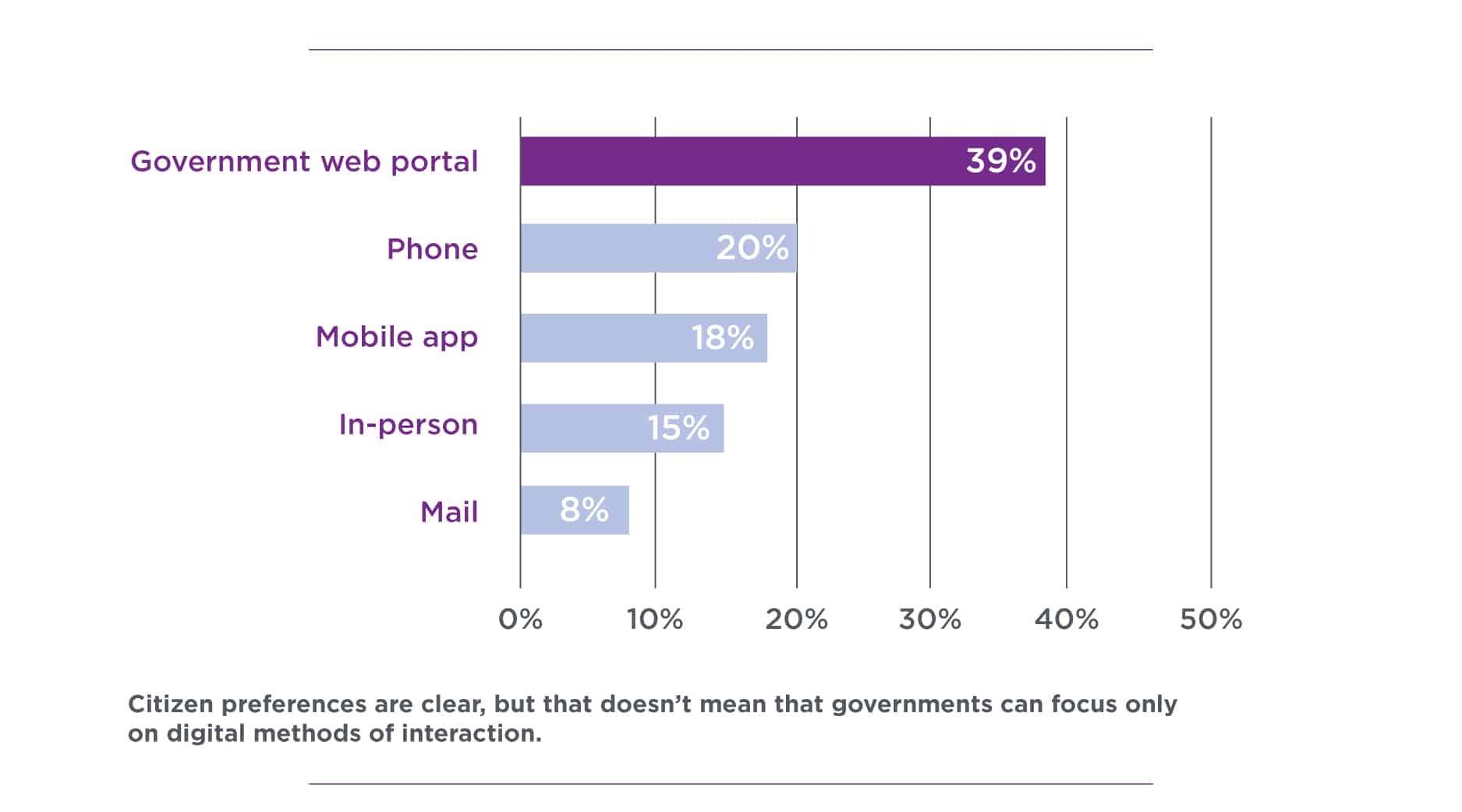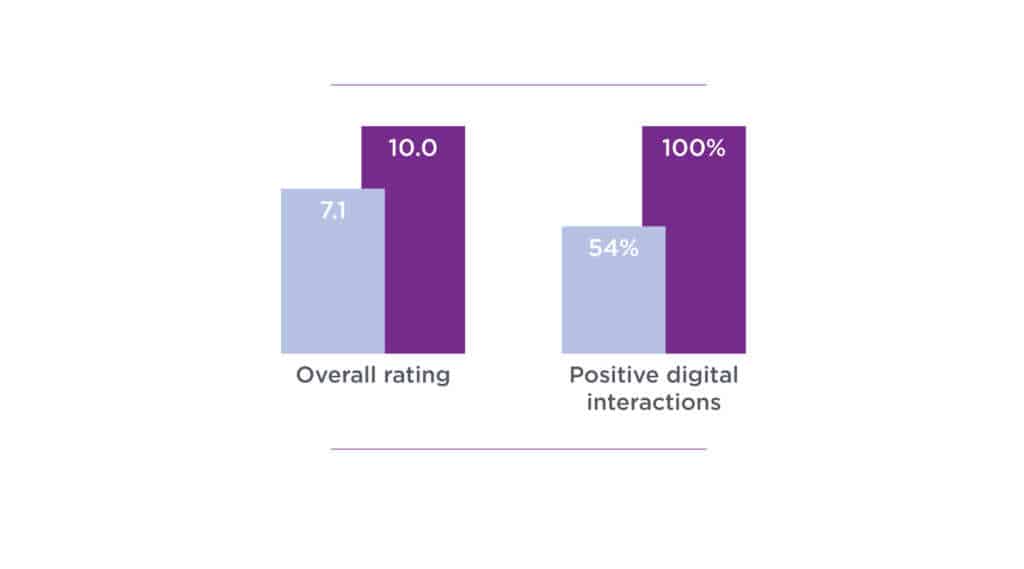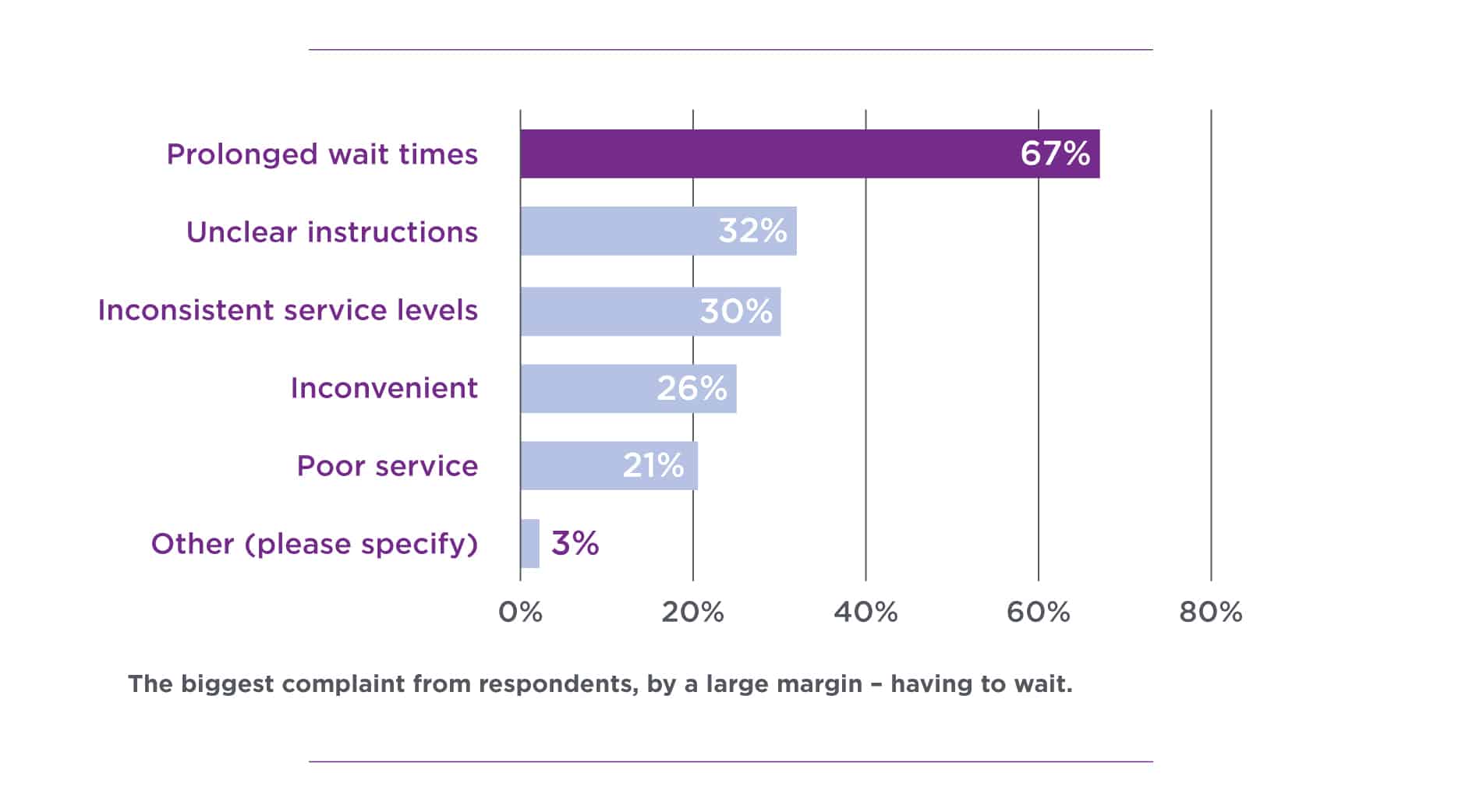In a recent survey that spanned six countries, Entrust found that while progress is being made in the way that governments and citizens interact, there is definitely room for improvement.
The vast majority of respondents (84%) interact with governments between one and five times each year, pursuing typical outcomes – a driver’s license, paying taxes, and traveling. It’s no surprise that almost four out of ten respondents (39%) prefer the convenience of web portals over more traditional interaction methods such as mail (5%) and in-person (15%). And while preferences favor digital interactions, governments still must deliver the services and the credentials that citizens require − offering both digital and physical to ensure equal access to services and meet the preferences of its citizens and service providers alike.
Citizen interaction preferences

To meet the evolving needs of its citizens, governments are working with the private sector to deliver the outcomes citizens require. We’re heading toward a simple, smooth, and secure user experience from entry into the system, through the issuance of credentials and completing the required transactions – all relying on a single chain of trust that ensures the privacy and security of personal information and government systems.
Only half rated their digital interactions as positive
Overall, respondents rated their last government interaction at 7.1 on a 10-point scale. But when it comes to their last digital interaction, barely half (54%) rated those interactions as positive. While a 7.1 overall rating isn’t terrible by any means, there’s room for improvement. And it’s telling that only half of citizens, who are moving to faster and more convenient methods of interaction, were left with a positive impression. There’s clearly work to be done.

Citizens’ pain points with government interactions

Governments are paying attention…and taking action
In the countries we surveyed, citizens improving customer service is important to respondents. And many governments know it’s time to step up and simplify end-user experiences, as well as drive operational efficiencies and greater security. In the United Kingdom, a new solution enables a streamlined, more seamless way for travelers coming to the UK to be identified via biometrics, bringing more secure border control and speeding up identity and border checks. In the United States, “Delivering Excellent, Equitable, and Secure Federal Services and Customer Experience” is the number two priority on the President’s management agenda. The administration has gone so far as to designate 14 agencies as “High Impact Service Providers” and put the following strategies in place:
- Improve the service design, digital products, and customer-experience management of Federal High Impact Service Providers by reducing customer burden, addressing inequities, and streamlining processes.
- Design, build, and manage government service delivery for key life experiences that cut across Federal agencies.
- Identify and prioritize the development of Federal shared products, services, and standards that enable simple, seamless, and secure customer experiences across the Federal Government1.
Digital interactions are important and preferred, but phone, mail, and in-person remain important
Undoubtedly, phone calls, mail, and in-person interactions will remain among peoples preferences, and governments have the responsibility to make these services equally available to all. Citizens must have digital, physical, and hybrid credentials to fulfill the outcomes they’re after and the Entrust survey responses bear that out. People are asking for quick, convenient services at their fingertips.
Below is how respondents ranked what is important to them:
| 1 | Service when and where it’s needed | 55% |
| 2 | Secure, easy, and convenient identity verification | 53% |
| 3 | Customer data privacy and security is a priority | 49% |
| 4 | Self-service capabilities | 44% |
| 5 | Ability to track progress | 44% |
| 6 | Online forms | 43% |
| 7 | Consistent user experience across government organizations | 36% |
| 8 | Engage on behalf of others | 8% |
People are asking for the customer experience they’ve come to expect from their favorite retailers and banks.
Getting to simple, smooth, and secure. There’s good news and bad news.
The bad news is that from a technical perspective, simple, smooth, and secure experiences crash head-on into:
- Legacy apps
- Multiple independent solution providers
- A growing and dynamic threat landscape
The good news is that the challenges presented on the journey to becoming simple, smooth, and secure are being overcome and improvements are within reach.
- Composable systems break older models of rigid software development practices and introduce modularity − allowing organizations to quickly design, build, manage, and change systems as the needs of organizations evolve. Application Programming Interfaces (APIs) and Software Development Kits (SDKs) address connectivity to legacy systems and stem the proliferation of vendors, and costs, simplifying and shortening the citizen experience. Systems become easier to deploy, maintain, and scale.
- A single chain of trust reduces the attack surface and keeps citizen information safe.
- Enabling the right credential for the right transaction means
- No citizen is left behind
- People get what they need for the outcome they seek leading to happier citizens and increased trust in government
- Strong identities and authentication methods can lower the risk of fraud
The next blog in our government-citizen series interactions will explore the similarities and differences among countries and age groups. Are we all really all that different?
Methodology
To assess the perceptions, experiences, and preferences of citizens about their interactions with government, Entrust engaged an independent research firm in May 2023. 3,501 online survey responses were received from people between the ages of 18 and 75 residing in Australia, Canada, France, Germany UK, and USA. Only responses that met age and geographic qualifications were included, and respondents had to have interacted with the government in the previous 12 months.
Read more about how Entrust helps Governments provide Seamless, Simple and Secure citizen experiences: www.entrust.com/solutions/secure-digital-citizen-interactions
1. Delivering Excellent, Equitable, and Secure Federal Services and Customer Experience



